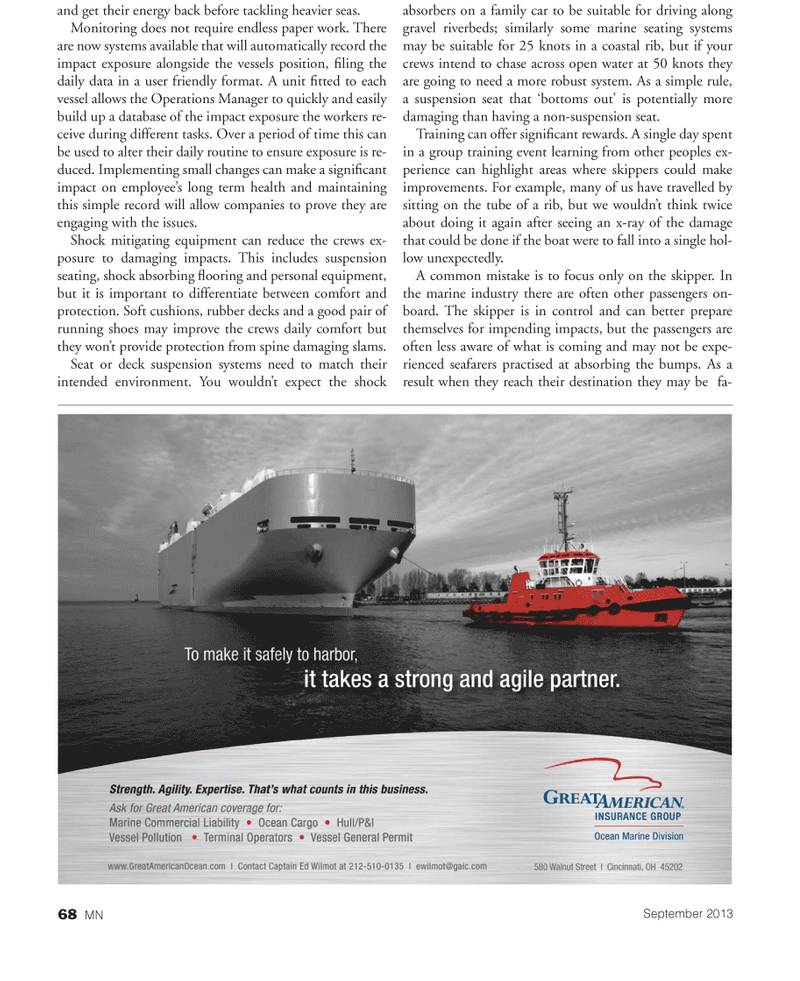
Page 68: of Marine News Magazine (September 2013)
Workboat Annual
Read this page in Pdf, Flash or Html5 edition of September 2013 Marine News Magazine
and get their energy back before tackling heavier seas. Monitoring does not require endless paper work. There are now systems available that will automatically record the impact exposure alongside the vessels position, ? ling the daily data in a user friendly format. A unit ? tted to each vessel allows the Operations Manager to quickly and easily build up a database of the impact exposure the workers re- ceive during different tasks. Over a period of time this can be used to alter their daily routine to ensure exposure is re- duced. Implementing small changes can make a signi? cant impact on employees long term health and maintaining this simple record will allow companies to prove they are engaging with the issues.Shock mitigating equipment can reduce the crews ex- posure to damaging impacts. This includes suspension seating, shock absorbing ? ooring and personal equipment, but it is important to differentiate between comfort and protection. Soft cushions, rubber decks and a good pair of running shoes may improve the crews daily comfort but they wont provide protection from spine damaging slams. Seat or deck suspension systems need to match their intended environment. You wouldnt expect the shock absorbers on a family car to be suitable for driving along gravel riverbeds; similarly some marine seating systems may be suitable for 25 knots in a coastal rib, but if your crews intend to chase across open water at 50 knots they are going to need a more robust system. As a simple rule, a suspension seat that bottoms out is potentially more damaging than having a non-suspension seat.Training can offer signi? cant rewards. A single day spent in a group training event learning from other peoples ex- perience can highlight areas where skippers could make improvements. For example, many of us have travelled by sitting on the tube of a rib, but we wouldnt think twice about doing it again after seeing an x-ray of the damage that could be done if the boat were to fall into a single hol- low unexpectedly. A common mistake is to focus only on the skipper. In the marine industry there are often other passengers on- board. The skipper is in control and can better prepare themselves for impending impacts, but the passengers are often less aware of what is coming and may not be expe- rienced seafarers practised at absorbing the bumps. As a result when they reach their destination they may be fa- September 201368 MNMN Sept2013 Layout 66-81.indd 688/29/2013 5:19:08 PM

 67
67

 69
69
